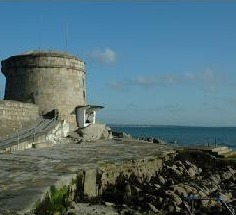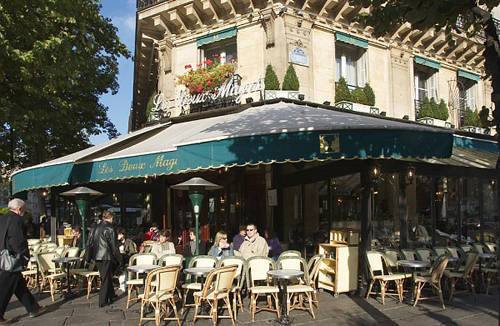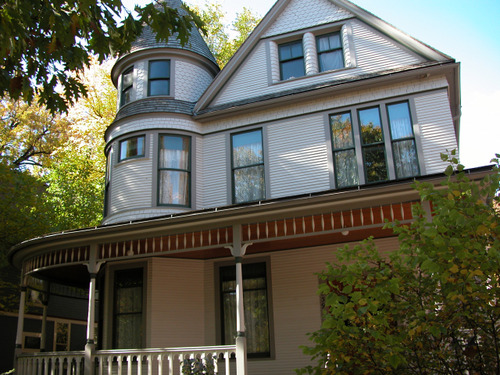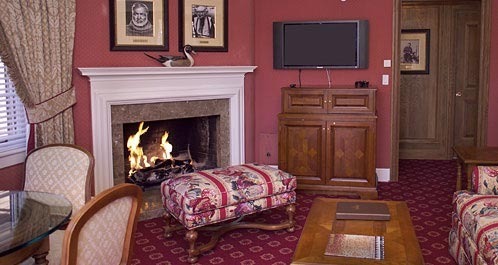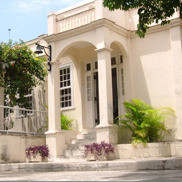Joni Rendon's Blog, page 9
October 26, 2011
If It's Nearly Halloween…
 If it's nearly Halloween, there must be a host of Edgar Allan Poe-inspired happenings taking place.
If it's nearly Halloween, there must be a host of Edgar Allan Poe-inspired happenings taking place.
Richmond residents can get a head start on Halloween festivities at the Poe Museum's last Unhappy Hour of the season tomorrow, October 27 (6-9 p.m.). Head back to the museum (left) on Saturday for Poe's Pumpkin Patch, a party for readers of all ages. Among the activities on the agenda are pumpkin decorating, a "Black Cat" pinata, and a mummy-wrapping contest inspired by one of Poe's stories. The museum encourages attendees to bring along the kids, especially if you want to "make sure [they] grow up weird." Now there's an invitation that might be hard to refuse. Entry to the extravaganza is included with regular museum admission.
If you'd like to find out "how Halloween is an ideal time of year to celebrate the works of Edgar Allan Poe," stop by the National Historic Site dedicated to the writer in Philadelphia. At 2 p.m. on Saturday and Sunday, October 29 and 30, a park ranger will lead the 45-minute illustrated presentation at Poe's former abode, and on Friday, October 28, the themed talk will take place at the Portrait Gallery in the Second Bank of the United States at Independence National Historical Park, also at 2 p.m.
In Baltimore this Sunday, October 30 (6-9 p.m.), is Poe's Frightful Halloween at Westminster Hall, with a dramatic reading of "A Monkey's Paw," a costume contest, and more. Admission is $10 for adults, $3 for kids 12 and under. Proceeds are going to the Poe House and Museum, which has had its funding cut by the city of Baltimore and is in danger of closing its doors for good. Also in support of the historic landmark is The Spirit of Poe anthology, coming from Literary Landmark Press the first week in November.
New Yorkers can pay a visit to the Poe Cottage in the Bronx, which recently re-opened after a year-long restoration. Midwesterners can join our friend and fellow literary traveler Gary Wyatt this Friday, October 28 (7-9 p.m.) at Belmont Vineyards & Winery in Leasburg, Missouri, where he'll be reading "The Raven" and other Poe tales. Cheers to that.
[image error] [image error]



 [image error]
[image error]

Sister Carrie's Chicago
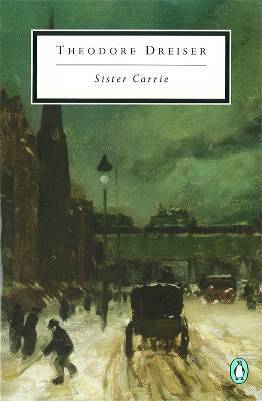 "One of the joys of reading Sister Carrie has been to follow Carrie on her journey through the streets and sights of Chicago in 1889," says avid literary traveler and bookseller Margie White of The Bookstore in Glen Ellyn, Illinois.
"One of the joys of reading Sister Carrie has been to follow Carrie on her journey through the streets and sights of Chicago in 1889," says avid literary traveler and bookseller Margie White of The Bookstore in Glen Ellyn, Illinois.
Theodore Dreiser's tale is the story of a young girl who leaves behind life in rural Wisconsin to seek fame and fortune in Chicago, becoming a wealthy man's mistress and later a celebrated actress. Now hailed as a classic, Sister Carrie was considered scandalous when it was published in 1900. Thirty years after it initially appeared in print, Nobel Prize winner Sinclair Lewis declared, "Dreiser's great first novel…came to housebound and airless America like a great free Western wind, and to our stuffy domesticity gave us the first fresh air since Mark Twain and Whitman."
Margie has created a self-guided walking tour of Sister Carrie sites in Chicago, from the department stores where the titular character seeks employment to the locale of a clandestine meeting with a suitor. So, Windy City residents and visitors, if you're up for a literary trek through the city, check out the tour on The Bookstore's blog: justthebookstore.blogspot.com.








If It’s Nearly Halloween…
 If it’s nearly Halloween, there must be a host of Edgar Allan Poe-inspired happenings taking place.
If it’s nearly Halloween, there must be a host of Edgar Allan Poe-inspired happenings taking place.
Richmond residents can get a head start on Halloween festivities at the Poe Museum’s last Unhappy Hour of the season tomorrow, October 27 (6-9 p.m.). Head back to the museum (left) on Saturday for Poe’s Pumpkin Patch, a party for readers of all ages. Among the activities on the agenda are pumpkin decorating, a “Black Cat” pinata, and a mummy-wrapping contest inspired by one of Poe’s stories. The museum encourages attendees to bring along the kids, especially if you want to “make sure [they] grow up weird.” Now there’s an invitation that might be hard to refuse. Entry to the extravaganza is included with regular museum admission.
If you’d like to find out “how Halloween is an ideal time of year to celebrate the works of Edgar Allan Poe,” stop by the National Historic Site dedicated to the writer in Philadelphia. At 2 p.m. on Saturday and Sunday, October 29 and 30, a park ranger will lead the 45-minute illustrated presentation at Poe’s former abode, and on Friday, October 28, the themed talk will take place at the Portrait Gallery in the Second Bank of the United States at Independence National Historical Park, also at 2 p.m.
In Baltimore this Sunday, October 30 (6-9 p.m.), is Poe’s Frightful Halloween at Westminster Hall, with a dramatic reading of “A Monkey’s Paw,” a costume contest, and more. Admission is $10 for adults, $3 for kids 12 and under. Proceeds are going to the Poe House and Museum, which has had its funding cut by the city of Baltimore and is in danger of closing its doors for good. Also in support of the historic landmark is The Spirit of Poe anthology, coming from Literary Landmark Press the first week in November.
New Yorkers will have to wait a little longer to visit the recently-refurbished Poe Cottage in the Bronx. The New York Times article “Poe’s Cottage, Weak and Weary No More” has the run-down on the house and a newly-constructed, imaginative visitor center.
Midwesterners can join our friend and fellow literary traveler Gary Wyatt this Friday, October 28 (7-9 p.m.) at Belmont Vineyards & Winery in Leasburg, Missouri, where he’ll be reading “The Raven” and other Poe tales. Cheers to that.
[image error] [image error]



 [image error]
[image error]

Sister Carrie’s Chicago
 “One of the joys of reading Sister Carrie has been to follow Carrie on her journey through the streets and sights of Chicago in 1889,” says avid literary traveler and bookseller Margie White of The Bookstore in Glen Ellyn, Illinois.
“One of the joys of reading Sister Carrie has been to follow Carrie on her journey through the streets and sights of Chicago in 1889,” says avid literary traveler and bookseller Margie White of The Bookstore in Glen Ellyn, Illinois.
Theodore Dreiser’s tale is the story of a young girl who leaves behind life in rural Wisconsin to seek fame and fortune in Chicago, becoming a wealthy man’s mistress and later a celebrated actress. Now hailed as a classic, Sister Carrie was considered scandalous when it was published in 1900. Thirty years after it initially appeared in print, Nobel Prize winner Sinclair Lewis declared, “Dreiser’s great first novel…came to housebound and airless America like a great free Western wind, and to our stuffy domesticity gave us the first fresh air since Mark Twain and Whitman.”
Margie has created a self-guided walking tour of Sister Carrie sites in Chicago, from the department stores where the titular character seeks employment to the locale of a clandestine meeting with a suitor. So, Windy City residents and visitors, if you’re up for a literary trek through the city, check out the tour on The Bookstore’s blog: justthebookstore.blogspot.com.








September 28, 2011
Banned Books Week – James Joyce's Ulysses
The 30th annual Banned Books Week (September 23 – October 1), sponsored by the American Library Association, is in full swing with events and displays at libraries and bookstores across the country, along with a Virtual Read-out. Bibliophiles are invited to create videos of themselves reading from their favorite banned or challenged book and post it to the Banned Books Week channel.
The list of banned or challenged books runs wide and deep, from contemporary tales such as Sara Gruen's Water for Elephants to classics like James Joyce's Ulysses. The Irish writer's novel might not have made it into print if it weren't for Sylvia Beach, the original proprietor of the famed Parisian bookshop Shakespeare and Company and confidante and champion of expatriate writers. In 1922, she published the Ulysses—controversial in part for its use of "dirty words" and sexual content—at her own expense. Another friend and loyal customer, Ernest Hemingway, aided Beach in having the book smuggled into the United States, where it was banned.
On display at the James Joyce Museum and Tower at Sandycove Point on the southern edge of Dublin Bay, a 40-foot granite tower where the scribe once stayed and later set the opening scene of Ulysses, is a rare early copy of the notorious tale illustrated by Henri Matisse.
[Photo © Dublin Tourism/VisitDublin.com]








Banned Books Week – James Joyce’s Ulysses
The 30th annual Banned Books Week (September 23 – October 1), sponsored by the American Library Association, is in full swing with events and displays at libraries and bookstores across the country, along with a Virtual Read-out. Bibliophiles are invited to create videos of themselves reading from their favorite banned or challenged book and post it to the Banned Books Week channel.
The list of challenged books runs wide and deep, from contemporary tales such as Sara Gruen’s Water for Elephants to classics like James Joyce’s Ulysses. The Irish writer’s novel might not have made it into print if it weren’t for Sylvia Beach, the original proprietor of the famed Parisian bookshop Shakespeare and Company and confidante and champion of expatriate writers. In 1922, she published Ulysses—controversial in part for its use of “dirty words” and sexual content—at her own expense. Another friend and loyal customer, Ernest Hemingway, aided Beach in having the book smuggled into the United States, where it was banned.
On display at the James Joyce Museum and Tower at Sandycove Point on the southern edge of Dublin Bay, a 40-foot granite tower where the scribe once stayed and later set the opening scene of Ulysses, is a rare early copy of the notorious tale illustrated by Henri Matisse.
[Photo © Dublin Tourism/VisitDublin.com]








September 24, 2011
Happy B-Day, F. Scott Fitzgerald
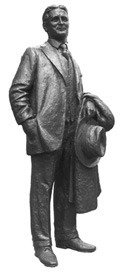 Jazz Age party boy and chronicler F. Scott Fitzgerald was born 115 years ago today in St. Paul, Minnesota.
Jazz Age party boy and chronicler F. Scott Fitzgerald was born 115 years ago today in St. Paul, Minnesota.
Regardless of when you visit the Twin Cities, the St. Paul Public Library makes it easy to follow in the writer's footsteps with the free F. Scott Fitzgerald in St. Paul Homes and Haunts self-guided walking tour. Highlights include the scribe's 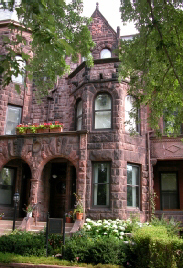 birthplace at 481 Laurel Avenue and the Romanesque-style brownstone at 599 Summit (right), where he spent the summer of 1919 sequestered in a top-floor room in his parents' apartment working on his first novel. (Both buildings are privately occupied and can only be viewed from the outside.) When Fitzgerald received word Scribner's had made an offer on the book, he quit his job as a railroad laborer and trumpeted his literary news. "That day I quit work and ran along the streets," he recalled, "stopping automobiles to tell friends and acquaintances about it—my novel, This Side of Paradise, was accepted for publication."
birthplace at 481 Laurel Avenue and the Romanesque-style brownstone at 599 Summit (right), where he spent the summer of 1919 sequestered in a top-floor room in his parents' apartment working on his first novel. (Both buildings are privately occupied and can only be viewed from the outside.) When Fitzgerald received word Scribner's had made an offer on the book, he quit his job as a railroad laborer and trumpeted his literary news. "That day I quit work and ran along the streets," he recalled, "stopping automobiles to tell friends and acquaintances about it—my novel, This Side of Paradise, was accepted for publication."
On display in the F. Scott Fitzgerald Reading Alcove at the Central Library branch (90 West Fourth Street) is a small collection of
items related to the writer. Located in nearby Rice Park is a statue (above left) of Fitzgerald.
Tony Summit Avenue has another literary connection. Nobel Prize winner Sinclair Lewis once rented a house at number 516 in late 1917.
He intended to write about robber baron and railway magnate James J. Hill (referenced by Fitzgerald in The Great Gatsby), whose red sandstone
mansion at 240 Summit gave the street the epithet "Avenue of the Barons."








September 10, 2011
Lesser-Known Literary Cities
In this month's issue of National Geographic Traveler, Shannon's article, "The Urban Reader," takes a look at four lesser-known literary cities.  Some things for book lovers to do: tour the awe-inspiring Library of Congress in Washington, D.C.; visit poet Pablo Neruda's house (built for his mistress and muse) in Santiago; dine in a historic cellar restaurant in Stockholm's Old Town, a longtime haunt of members of the Swedish Academy, which selects the Nobel Prize in literature recipients; and block out time to browse at Blackwell's Bookshop in Oxford, England, where a single room houses more than 160,000 books. A bonus: places to track down Sir Arthur Conan Doyle's famous detective in London, in anticipation of the December big-screen release of Sherlock Holmes: Game of Shadows.
Some things for book lovers to do: tour the awe-inspiring Library of Congress in Washington, D.C.; visit poet Pablo Neruda's house (built for his mistress and muse) in Santiago; dine in a historic cellar restaurant in Stockholm's Old Town, a longtime haunt of members of the Swedish Academy, which selects the Nobel Prize in literature recipients; and block out time to browse at Blackwell's Bookshop in Oxford, England, where a single room houses more than 160,000 books. A bonus: places to track down Sir Arthur Conan Doyle's famous detective in London, in anticipation of the December big-screen release of Sherlock Holmes: Game of Shadows.








August 7, 2011
Summertime Travels, On the Page
If visiting an author house isn't on your itinerary this summer, do the next best thing—take to the page. These two novels not only feature classic scribes as characters, they use literary landmarks as backdrops. Visits to Hemingway's Paris haunts, like Les Deux Magots cafe (below left), and Flannery O'Connor's rural Georgia farm (right) come wrapped up with intriguing storylines. For some of us, that makes for the perfect summer read.
The Paris Wife by Paula McClain
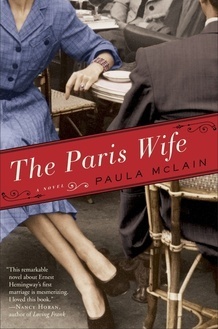 Ernest Hemingway's closest companion during his now-famous years in Paris in the 1920s was his first wife, Hadley Richardson, who makes brief appearances in his memoir A Moveable Feast. Hadley was 28 when she met Hemingway at a mutual friend's party in Chicago. Nearly a decade older than the aspiring writer, pretty yet plain, educated but far from worldly, she seems an unlikely match for the handsome, charming, dynamic Hemingway. After a whirlwind courtship the two marry and set sail for Europe. In The Paris Wife, Paula McClain recounts their years in Jazz Age Paris mingling with the likes of Gertrude Stein, Ezra Pound, and F. Scott Fitzgerald before their marriage comes apart.
Ernest Hemingway's closest companion during his now-famous years in Paris in the 1920s was his first wife, Hadley Richardson, who makes brief appearances in his memoir A Moveable Feast. Hadley was 28 when she met Hemingway at a mutual friend's party in Chicago. Nearly a decade older than the aspiring writer, pretty yet plain, educated but far from worldly, she seems an unlikely match for the handsome, charming, dynamic Hemingway. After a whirlwind courtship the two marry and set sail for Europe. In The Paris Wife, Paula McClain recounts their years in Jazz Age Paris mingling with the likes of Gertrude Stein, Ezra Pound, and F. Scott Fitzgerald before their marriage comes apart.
A Good Hard Look by Ann Napolitano
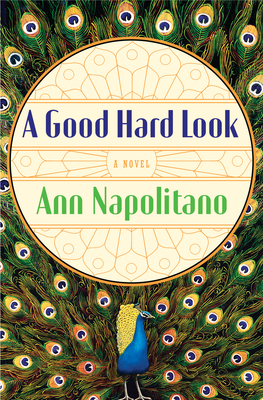 Stricken with lupus at age twenty-five, Flannery O'Connor left New York City and returned to her family's ancestral farm, Andalusia, in Milledgeville, Georgia, where she devoted herself to writing and raising peacocks, swans, chickens, and other birds. In Ann Napolitano's novel, O'Connor's quiet existence at Andalusia is broken up when she strikes up a friendship with the married Melvin Whiteson. He came to Milledgeville to start a new chapter in his life, but when he meets Flannery—who despite her illness is vibrantly alive—he starts to question the choices he has made.
Stricken with lupus at age twenty-five, Flannery O'Connor left New York City and returned to her family's ancestral farm, Andalusia, in Milledgeville, Georgia, where she devoted herself to writing and raising peacocks, swans, chickens, and other birds. In Ann Napolitano's novel, O'Connor's quiet existence at Andalusia is broken up when she strikes up a friendship with the married Melvin Whiteson. He came to Milledgeville to start a new chapter in his life, but when he meets Flannery—who despite her illness is vibrantly alive—he starts to question the choices he has made.
[photos © Paris Tourist Office, David Lefranc; Flannery O'Connor Andalusia Foundation]








July 21, 2011
Hemingway's July Days
Ernest Hemingway was born in July on the cusp of the 20th century, and the summer month would prove to be a pivotal time for the writer throughout his life. Here are some key July moments in the Hemingway timeline:
July 21, 1899 – Hemingway was born in Oak Park, Illinois, a middle-class Chicago suburb where he spent the first 18 years of his life. He
spent his early childhood years in a grand turreted, Queen Anne-style home, now a shrine to the scribe and operated in conjunction with the nearby Ernest Hemingway Museum.
July 1918 – While driving an ambulance for the Red Cross on the Italian front lines during World War I, 18-year-old Hemingway was seriously
wounded by mortar fire. His shrapnel wounds were tended to by a nurse, Agnes von Kurowsky, with whom he fell in love. Their relationship inspired his novel about a doomed wartime romance, A Farewell to Arms. Agnes' rejection letter to the brave warrior is on display at the Ernest Hemingway Museum.
July 1923 – The insatiable traveler attended his first bullfight during Pamplona's legendary running of the bulls, returning nearly every year for the rest of the decade to witness the death-defying spectacle. His Spanish sojourns inspired his 1925 novel The Sun Also Rises, which takes place during the annual Fiesta of San Fermin and follows a dissolute band of expats who spend their days drinking brandy and absinthe at Café Iruna.
July 1937 – At the White House, Hemingway attended a viewing of the film The Spanish Earth with Franklin and Eleanor Roosevelt. He had become outspoken against anti-fascism after covering the Spanish Civil War for a North American newspaper and co-wrote and narrated the documentary shown to the president. The event was a fundraiser for ambulances for the Loyalist forces fighting Franco.
July 1940 – The famous scribe wrapped up For Whom the Bell Tolls, which was published three months later and nominated for a Pulitzer Prize. He penned the tale in various locations, including Idaho, where he occupied the Parlor Suite (number 206) at the Sun Valley Lodge. He dubbed the room "Glamour House" and posed there next to his typewriter for the book's dust jacket photo. Today his picture hangs above the fireplace.
July 1960 – Hemingway left Cuba for the last time after having spent nearly two decades residing on the island, where his refuge was a 13-acre estate overlooking Havana. At La Finca Vigía (Spanish for "lookout farm"), among the works he wrote was The Old Man and the Sea, his Pulitzer Prize-winning tale of man versus marlin.
July 2, 1961 – Suffering from debilitating illness and bouts of depression, Hemingway died from a self-inflicted gunshot wound at his home just west of Ketchum, Idaho, 50 years ago. His two-story chalet overlooking Big Wood River has been preserved by the Nature Conservancy and is open to the public only on special occasions.
[Photos © Hemingway Birthplace Home, Cafe Iruna, Sun Valley Lodge, Finca Vigia Foundation]








Joni Rendon's Blog
- Joni Rendon's profile
- 5 followers





